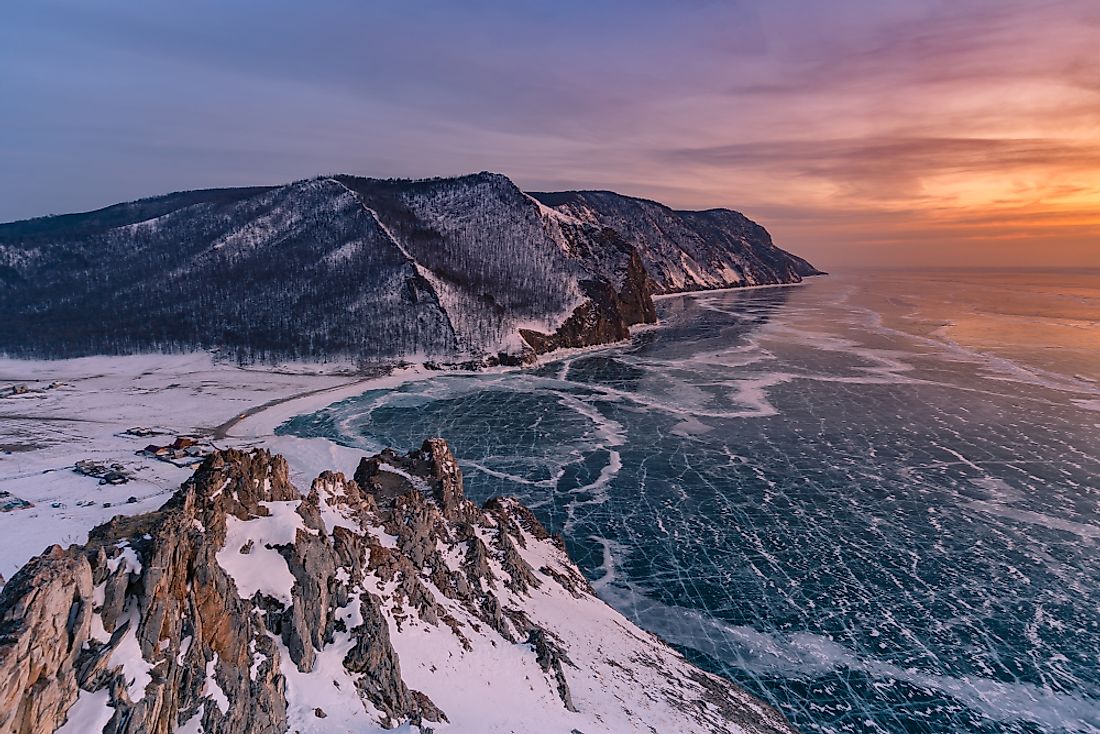The Deepest Lakes By Continent

Lakes have various shapes and sizes but some of them hold records for being the deepest, largest, oldest, or clearest water bodies in the world. Depths of a water body has always fascinated human beings. Tales and legends describing a bottomless lake holding mysterious monsters, lost cities, mermaids, and treasures are widespread in all cultures of the world. Today, it has been possible to measure the actual depths of even the deepest lakes in the world. Sonar, miniature submarines, remote cameras, etc., have been used for this purpose. However, the mystery associated with deep waters still remain. Below is a list of the deepest lakes of every continent.
8. Africa: Lake Tanganyika
One of the African Great Lakes, Lake Tanganyika is the continent’s deepest lake. It has a maximum depth of 1,470 m. The average depth of the lake is 570 m. Lake Tanganyika is also the world’s second deepest lake, second oldest lake, and the second largest lake by volume. It is shared by four African countries: Zambia, DRC, Tanzania, and Burundi. 16% of the total available freshwater in the world is present in Lake Tanganyika. The pH of the lake’s alkaline waters drops gradually with depth from the surface from around 9 to 8.3 in the deepest parts. The lake has stratified water and seasonal mixing of its waters usually does not take place beyond a depth of 150 m.
7. Antarctica: Radok Lake
Radok Lake is Antarctica’s deepest lake. It has a maximum depth of 362 m. The Radok Lake was mapped from the air by an Australian expedition team. It is located south-west of the Beaver Lake and south-east of the Aramis Range. The lake is formed of meltwater derived from a glacier tongue feeding the lake from the west. The Pagodroma Gorge drains the Radok Lake into the Beaver Lake.
6. Asia: Lake Baikal
The world’s deepest lake is located in Asia. It is Lake Baikal in Russia. It is 1,642 m deep at its deepest part. Lake Baikal holds many other titles. It is the world’s largest freshwater lake by volume. It is also regarded as the world’s oldest lake. It holds about 23% of the total available freshwater in the world. Lake Baikal is also famous for its clear waters. Thousands of species of flora and fauna live in and around the lake including many species found nowhere else in the world. No wonder that the lake was inscribed as a UNESCO World Heritage Site in 1996.
5. Europe: Hornindalsvatnet
Hornindalsvatnet, a lake located in Norway, is the deepest lake in Europe. It has a maximum depth of 514 m. The bottom of this lake is at an elevation of 461 m below sea level. Hornindalsvatnet occupies an area 50 square km in the Sogn og Fjordane county of Norway. The River Eidselva drains the lake.
4. North America: Great Slave Lake
North America’s deepest lake is located in Canada. It occupies an area of 27,200 square km in the Northwest Territories of Canada and is the country’s second largest lake by surface area and the world’s tenth largest by the same parameter. The Great Slave Lake has a maximum depth of 614 m. It has an average depth of 41 m. The main western part of the Great Slave Lake is about 187.7 m deep at its deepest point but the McLeod Bay and Christie Bay to the east of the lake are much deeper. The maximum depth of 614 m has been recorded in the Christie Bay region of this lake.
3. Oceania: Lake Hauroko
Lake Hauroko is regarded as the deepest lake in Oceania. It is 462 m deep at its deepest area. It is located in a valley within the limits of New Zealand’s Fiordland National Park. The park is located in the South Island of the country. Lake Hauroko is S-shaped and encompasses an area of 63 square km. It is located at an altitude of 150 m above sea level.
2. Australia: Lake St Clair
Lake St Clair is the deepest lake in Australia. It is located in the Central Highlands region of Tasmania. It has a maximum depth of 160 m and occupies an area of around 45 square km. Lake St Clair has a glacial origin and was formed by glacial erosional activity. It is known for its beautiful scenery and is a popular tourist destination in the region.
1. South America: O’Higgins/San Martín
The deepest lake in South America is an international lake located on the Chile-Argentina border. It is called San Martin in Argentina and O'Higgins in Chile. The lake has a maximum depth of 836 m. It covers an area of 1,013 square km at an elevation of 820 ft above sea level.











